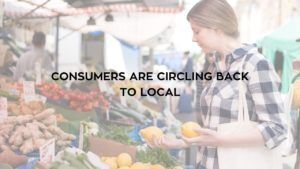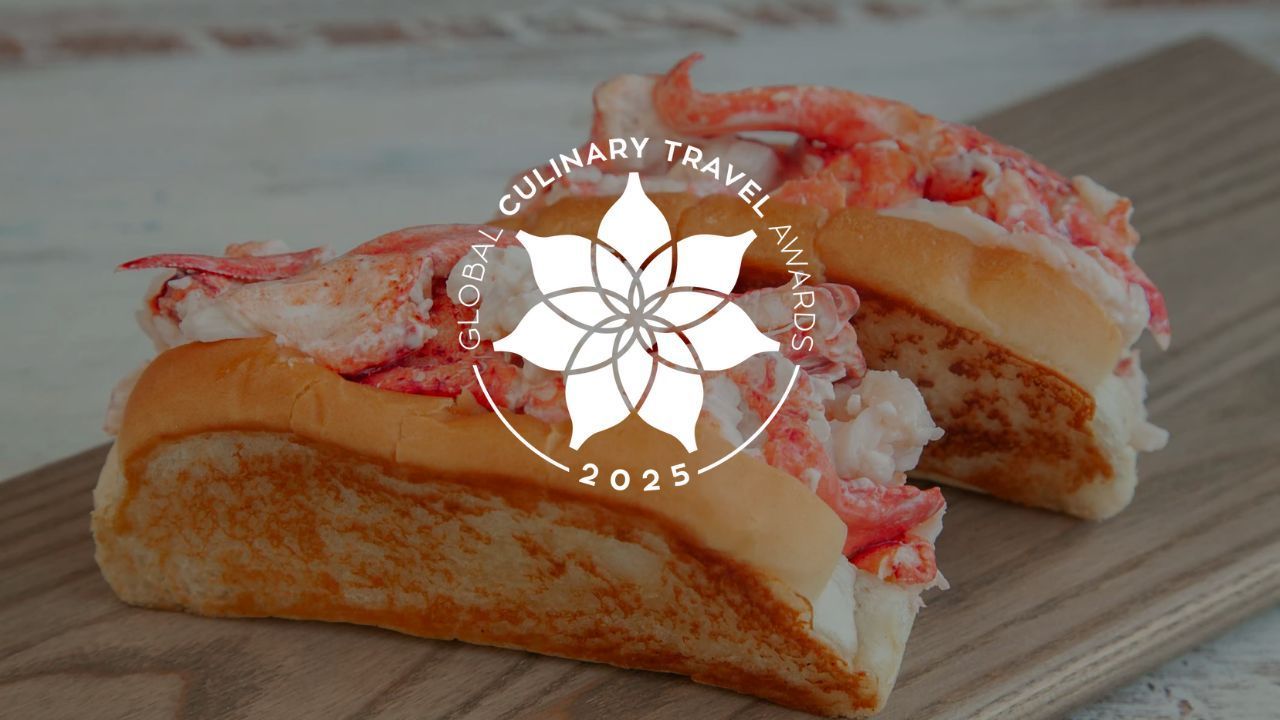Consumers Are Circling Back to Local

At the beginning of the COVID pandemic, many skeptics believed that in the near future, most local food stores would completely cease operations. They believed that from Amazon and other online grocery retailers would rise the era of endless online aisles and without empty shelves. The logic was simple; Amazon could provide any product that a local store can, but with lower costs due to its vast international network of fulfillment centers. Amazon cannot have every food product available at every corner of the globe at all times, but conventional logic said that it had enough to outcompete most small stores.
Now 17 months into the COVID pandemic and trending toward the post-pandemic phase, we are seeing a peculiar transition. While skeptics were correct that Amazon has thrived during the pandemic with the distribution of general online purchases, consumer interest in local stores has also surged.
PRE-PANDEMIC
Before the pandemic and even before Amazon, local grocery retailers thrived on individuality. In most places across the world, local stores used to provide whatever is fresh for the day, along with necessary essentials. Small shops were unable to hang onto inventory for long, and locals were unable to find better options than the convenience of their local shops combined with quality products. It was the perfect matrimony.
Many people see Amazon’s growth from the 1990s to today as an aggressive takeover of retail. However, in reality, it took several decades for Amazon to grow, acquire Whole Foods, and create its current scale. In that period of time too, as options grew, so too did people’s preferences for convenience. A 2016 Deloitte Consulting survey revealed that, while in the 2016 holiday season 70% of consumers searched for products online, 66% of shoppers still preferred to shop in brick-and-mortar stores. Then, as preferences continued to shift from shopping in brick-and-mortar to also searching for products online, retail brick-and-mortar bankruptcies grew, and shopping shifted in favor of online retail. In 2019, even before the pandemic, 17 major retail companies declared bankruptcy. 30 filed for bankruptcy in 2020. While large retail stores failed, so too did countless thousands of local stores, outcompeted by the online movement.
COVID PANDEMIC AND RECOVERY
At first, when the COVID pandemic hit in March 2020, the immediate impact seemed to be the quick acceleration of digitizing all local stores and retailers. A survey conducted on nine European countries found that, during the pandemic alone, in-person shopping for foods and beverages decreased 7% to 8% every two months in countries like Italy and Switzerland. Estimates from the UN show that e-commerce as a whole rose somewhere between 16% to 19% in 2020. More densely populated countries with strong value chains like the UK and China experienced 15% to 20% spikes in online transactions over this period, with the US trailing behind at 11% to 14% and Canada at only 3.6% to 6.2%. The trend to convert large brick-and-mortar stores to fulfillment centers for online purchases continued to strengthen. Previously failing, Best Buy (an American technology and appliance giant) has found moderate success after changing 250 of its brick-and-mortar stores to ship-from-store hubs. The COVID pandemic consolidated retail; businesses that could not convert to the online model failed, and those that succeeded took over from their success. With more consolidation in the market, shipping costs decreased even more, allowing groceries to be shipped to people at even cheaper costs.
So where exactly did that leave local grocery stores? During the pandemic, while online purchases increased, so too did purchases for some local stores. To many consumers, successful local stores no longer even provide substitute goods. Instead, they are both complementary industries and co-exist. How can this be possible?
WHY LOCAL STORES HAVE BEEN REBORN
Due to the social distancing measures imposed by the government worldwide during the COVID pandemic along with the rise of remote work, location is an important piece that explains the rebirth of local stores. On one hand, Zoom and other video call technology has made geographic location less important and one’s internet connection more important, improving prospects for large online retailers. On the other hand, the COVID crisis has led to more government collaboration, specifically surrounding local authorities and distribution of local production. This has allowed for the quality of local specialty products to improve, causing interest to rise.
Another important factor is restriction on movement between regions. While consumers value low costs and convenience for basic products, mobility restrictions have forced people to have “stay-cations” or travel locally and appreciate the experiences (and products) around them. Not only is there more appreciation for local products, but there is a desire to “return to normalcy” even if that normalcy was slipping away pre-pandemic.
Perhaps most importantly, local stores have had success by adaptation. To keep up with the digital age, many stores have provided their customers with online access to viewing their purchases. In addition, many of these stores have cut out essential products in favor of a multi-channel and experiential shopping experience. Specialization may have saved the industry. Studies have shown that 38% of consumers “do more shopping online and visit stores that provide great experiences.” Among the items most commonly bought online were rice, pasta, coffee, tea, vegetables, and fruit. Cost-saving measures have allowed for large online retailers to capitalize on selling necessities, but local retailers can provide something more personal while maintaining competitive pricing.
POTENTIAL THREATS
Of course, it is not all roses either for local stores post-pandemic. Among Western European countries for example, there is a large disparity in online shopping. In Germany, for example, 80% of people shop online, whereas in Italy less than 40% of people shop online. The disparity in online shopping habits may reflect that local stores only thrive in certain locations. Adding to that confounding variable is that while many local stores in Western Europe and North America are adapting to the changing times, it may not be the case for much of the rest of the world. In South America, where COVID is still ravaging the continent, people may shop less online. However, with strong COVID restrictions, shopping locally may instead mean for them opting for local supermarket chains, as opposed to markets and family-owned businesses.
In addition to location, another factor to consider is the COVID stimulus. As we closed shops to stop the spread of COVID, many businesses shut down, stifling the economy. In response, countries like the United States gave back trillions of dollars of stimulus to the people in the form of direct payments, totaling 26% of the annual GDP. COVID stimulus has varied widely by country, with countries such as Japan offering 56% of their GDP in the form of stimulus, while Mexico only offered 2%. In the short term, this has meant people across the world have more expendable income. These shoppers had artificial income that they could spend on not just online groceries, but also on specialty items in local stores. However, in recent months, as the money has made its way through the economy, the renewed consumer spending power has converted to inflation. In the United States alone, inflation has risen from an annual average of around 1.5% to 5.4% in the past few months , a rate not seen in decades. With higher inflation comes higher consumer prices, meaning that specialty stores may soon become too expensive. The short-term boon to local stores could be just that: short term.
CONCLUSION
While there are several potential threats to the long-term viability of local stores, there is a way for them to sustain their current revival. It all centers around continuing to combine the online experience with the growing “experience economy.”
As people return to stores and shops everywhere post-COVID, people are craving an experience. After sitting at home for several months, consumers are looking for something unique that brings them a memory. If local stores continue to sell the same necessity products that are sold online, consumers will turn elsewhere. However, stores can play with space. As Deloitte Consulting suggests, they should “use the store as a showroom” to create a “personal shopping experience” and “emotional loyalty. ” There are a number of ways of doing this.
One example of “using the store as a showroom” is a treasure hunt. Companies like TJ Maxx hide “surprise” items in their stores and rotate them weekly. While less replicable in smaller stores, this idea demonstrates the importance of giving consumers something new and personal. Another popular example is social media experiences. Creating an aesthetic experience, with either decorations, layout, or even statues will allow people (specifically young millennials or Gen Z’ers) to connect better with the store and create “emotional loyalty.”
These are both new trends and may not even be good advice this time next year. As a Harvard Business Review study notes, “80% of U.S. consumers are still changing the way they shop.” While people’s preferences continue to change, if the pandemic has proven anything, above all people still value in-person experiences. Consumers really have circled back to local.
There will continue to be many threats to the future of local stores. But what people once saw as a dying industry has truly come full circle.
Written by Ben Palmer. Edited by Erik Wolf.
If you represent an area tourism office or local government and are looking for ways to support your local businesses to recover, we can help. Please get in touch.











